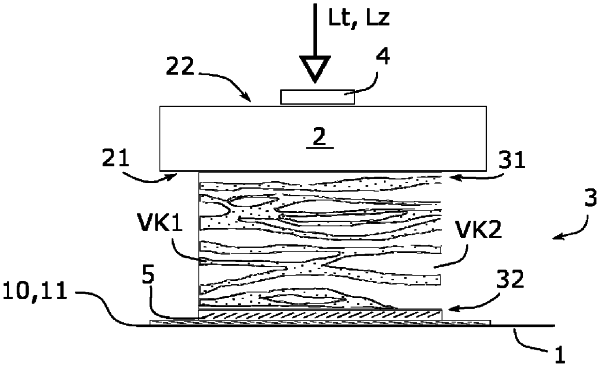| CPC B23K 1/0016 (2013.01) [B23K 35/0238 (2013.01); B23K 35/0244 (2013.01); B23K 35/262 (2013.01); B23K 35/302 (2013.01); H05K 1/181 (2013.01); H05K 3/3478 (2013.01); H05K 3/3494 (2013.01); B23K 2101/36 (2018.08)] | 16 Claims |

|
1. A method for creating a high-temperature-resistant, lead-free solder joint between a printed circuit board and a component, the method comprising:
providing a lead-free solder preform, wherein the lead-free solder preform includes a composite material including a first composite component arranged in layers;
attaching the solder preform to a solderable surface of the printed circuit board such that the layers of the first composite component are parallel to the solderable surface;
applying the component to the solder preform attached to the solderable surface, the component having a solderable first surface facing the solder preform; and
soldering the component to the solder preform in a hot-bar selective soldering process, the soldering including:
pressing a bar onto a second surface of the component facing away from the solder preform;
flowing an electric current through the bar until a predefined soldering temperature is reached in the bar, wherein at the predefined soldering temperature a first surface of the solder preform facing away from the solderable surface is soldered to the solderable first surface of the component facing the solder preform and wherein intermetallic phases are formed from the layers of the first composite component; and
moving the bar away from the component.
|